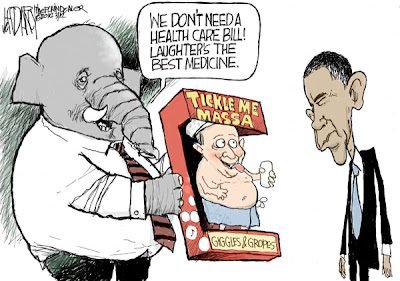2009
•2‐year tax credit (total cap of $1B) for new chronic disease therapy investments
•Medicare cuts to hospitals begin (long‐term care (7/1/09) and inpatient and rehabilitation facilities (FY10))
2010
•States and Federal officials review premium increases
•FDA authorized to approve "follow‐on" biologics
•Increase brand name pharmaceutical Medicaid rebate (from 15.1% to 23.1%)
•Medicare payments to physicians in primarily rural areas increase (2 years)
•Deny "black liquor" eligibility for cellulosic biofuel producers credit
•Tax credits provided to certain small employers for health care‐related expenses
•Increase adoption tax incentives for 2 years
•Codify economic substance doctrine and impose penalties for underpayments (transactions on/after 3/23/10)
•Provide income exclusion for specified Indian tribe health benefits provided after 3/23/10
•Temporary high‐risk pool and high‐cost union retiree reinsurance ($5 B each for 3.5 years) (6/23/10)
•Impose 10% tax on indoor UV tanning (7/1/10)
•Medicare cuts to inpatient psych hospitals (7/1/10)
•Prohibits lifetime and annual benefit spending limits (plan years beginning 9/23/10)
•Prohibits non‐group plans from canceling coverage (rescissions) (plan years beginning 9/23/10)
•Requires plans to cover, at no charge, most preventive care (plan years beginning 9/23/10)
•Allows dependents to stay on parents’ policies through age 26 (plan years beginning 9/23/10)
•Provides limited protections to children with pre‐existing conditions (plan years beginning 9/23/10)
•Hospitals in "Frontier States" (ND, MT, WY, SD, UT ) receive higher Medicare payments (FY11)
•Hospitals in “low‐cost” areas receive higher Medicare payments for 2 yrs ($400 million, FY11)
2011
•Medicare Advantage cuts begin
•No longer allowed to use FSA, HSA, HRA, Archer MSA distributions for over‐the-counter medicines
•Medicare cuts to home health begin
•Wealthier seniors ($85k/$170k) begin paying higher Part D premiums (not indexed for inflation in Parts B/D)
•Medicare reimbursement cuts when seniors use diagnostic imaging like MRIs, CT scans, etc.
•Medicare cuts begin to ambulance services, ASCs, diagnostic labs, and durable medical equipment
•Impose new annual tax on brand name pharmaceutical companies
•Americans begin paying premiums for federal long‐term care insurance (CLASS Act)
•Health plans required to spend a minimum of 80% of premiums on medical claims
•Physicians in "Frontier States" (ND, MT, WY, SD, UT ) receive higher Medicare payments
•Prohibition on Medicare payments to new physician‐owned hospitals
•Penalties for non‐qualified HSA and Archer MSA distributions double (to 20%)
•Seniors prohibited from purchasing power wheelchairs unless they first rent for 13 months
•Brand name drug companies begin providing 50% discount in the Part D “donut hole”
•10% Medicare bonus payment for primary care and general surgery (5 years)
•Employers required to report value of health benefits on W‐2
•Steps towards health insurance administrative simplification (reduced paperwork, etc) begins (5 yr process)
•Additional funding for community health centers (5 years)
•Seniors who hit Part D “donut hole "in 2010 receive $250 check (3/15/11)
•New Medicare cuts to long‐term care hospitals begin (7/1/11)
•Additional Medicare cuts to hospitals and cuts to nursing homes and inpatient rehab facilities begin (FY12)
•New tax on all private health insurance policies to pay for comp. eff. research (plan years beginning FY12)
2012
•Medicare cuts to dialysis treatment begins
•Require information reporting on payments to corporations
•Medicare to reduce spending by using an HMO‐like coordinated care model (Accountable Care Organizations)
•Medicare Advantage plans with a 4 or 5 star rating receive a quality bonus payment
•New Medicare cuts to inpatient psych hospitals (7/1/12)
•Hospital pay‐for‐quality program begins (FY13)
•Medicare cuts to hospitals with high readmission rates begin (FY13)
•Medicare cuts to hospice begin (FY13)
2013
•Impose $2,500 annual cap on FSA contributions (indexed to CPI)
•Increase Medicare wage tax by 0.9% and impose a new 3.8% tax on unearned, nonactive business income for those earning over $200k/$250k (not indexed to inflation)
•Generally increases (7.5% to 10%) threshold at which medical expenses, as a % of income, can be deductible
•Eliminate deduction for Part D retiree drug subsidy employers receive
•Impose 2.3% excise tax on medical devices
•Medicare cuts to hospitals who treat low‐income seniors begin
•Post‐acute pay for quality reporting begins
•CO‐OP Program: Secretary awards loans and grants for establishing nonprofit health insurers
•$500,000 deduction cap on compensation paid to insurance company employees and officers
•Part D “donut hole” reduction begins, reaching a 25% reduction by 2020
2014
•Individuals without gov't‐approved coverage are subject to a tax of the greater of $695 or 2.5% of income
•Employers who fail to offer "affordable" coverage would pay a $3,000 penalty for every employee that receives a subsidy through the Exchange
•Employers who do not offer insurance must pay a tax penalty of $2,000 for every fulltime employee
•More Medicare cuts to home health begin
•States must have established Exchanges
•Employers with more than 200 employees can auto‐enroll employees in health coverage, with opt‐out
•All non‐grandfathered and Exchange health plans required to meet federally mandated levels of coverage
•States must cover parents /childless adults up to 138% of poverty on Medicaid, receive increased FMAP
•Tax credits available for Exchange‐based coverage, amount varies by income up to 400% of poverty
•Insurers cannot impose any coverage restrictions on pre‐existing conditions (guaranteed issue/renewability)
•Modified community rating: individual or family coverage; geography; 3:1 ratio for age; 1.5 :1 for smoking
•Insurers must offer coverage to anyone wanting a policy and every policy has to be renewed
•Limits out‐of‐pocket cost‐sharing (tied to limits in HSAs, currently $5,950/$11,900 indexed to COLA)
•Insurance plans must include government‐defined "essential benefits " and coverage levels
•OPM must offer at least two multi‐state plans in every state
•Employers can offer some employees free choice vouchers for health insurance in the Exchange
•Government board (IPAB) begins submitting proposals to cut Medicare
•Impose tax on nearly all private health insurance plans
•Medicare payment cuts for hospital‐acquired infections begin (FY15)
2015
•More Medicare cuts to home health begin
2016
•States can form interstate insurance compacts if the coverage with HHS approval (2016)
2017
•Physician pay‐for‐quality program begins for all physicians
•States may allow large employers and multi‐employer health plans to purchase coverage in the Exchange.
•States may apply to the Secretary for a limited waiver from certain federal requirements
2018
•Impose "Cadillac tax on “high cost” plans, 40% tax on the benefit value above a certain threshold: ($10,200 individual coverage, $27,500 family or self‐only union multiemployer coverage)
COMMITTEE ON WAYS & MEANS REPUBLICANS



















.jpg)





























